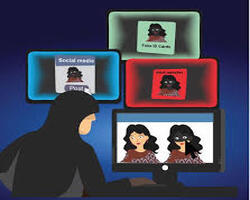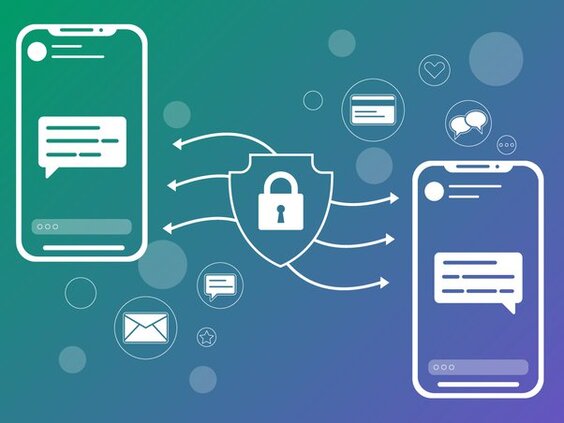

In today’s digital age, the ease of editing and altering images has led to the rise of a serious cybercrime—morphing. This involves digitally altering a person’s image using online tools, often with malicious intent. Young girls and women are particularly vulnerable, as their publicly shared photographs are frequently misused to create fake profiles, engage in sexting, or even generate explicit content for blackmail. As educators, teachers play a crucial role in recognizing the dangers of morphing, educating students about digital safety, and guiding them in responsible online behavior.
Why Should Teachers Be Concerned?
Morphing not only affects a student’s reputation but can also have severe psychological impacts. Victims of morphing often experience:
-
Emotional trauma due to online harassment and blackmail.
-
Loss of trust in digital platforms and social interactions.
-
Academic struggles as stress and anxiety interfere with learning.
-
Long-term consequences on self-esteem and mental health.
By identifying warning signs and educating students on preventive measures, teachers can help build a safer online environment.
Identifying Students at Risk
Teachers are in a unique position to observe behavioral changes that may indicate a student is experiencing cyber harassment due to morphing. Signs to watch for include:
-
Withdrawal from social activities and peer groups
-
Sudden changes in online behavior, such as deleting social media accounts
-
Decline in academic performance and concentration
-
Frequent anxiety, depression, or unexplained distress
-
Avoidance of discussing digital interactions
Educating Students on Digital Safety
To combat morphing, teachers should incorporate digital literacy into classroom discussions. Here are some essential steps:
1. Raising Awareness about Morphing
-
Explain what morphing is and how it is used in cybercrimes.
-
Discuss real-life examples and cases (without revealing identities) to illustrate the seriousness of the issue.
-
Encourage open conversations about digital safety, ensuring students feel comfortable reporting concerns.
2. Teaching Safe Online Behavior
-
Enable Privacy Settings: Show students how to use security features on social media platforms to control who can view their posts and images.
-
Limit Personal Image Sharing: Educate students about the risks of sharing pictures publicly.
-
Use Watermarks: Teach them how to apply watermarks to images to deter unauthorized alterations.
-
Avoid Accepting Unknown Requests: Warn against engaging with strangers online or sharing personal information.
3. Encouraging Critical Thinking in Digital Engagement
-
Help students differentiate between safe and unsafe online interactions.
-
Teach them to question suspicious activities, such as messages from unknown accounts asking for pictures.
-
Encourage students to report suspicious behavior to teachers, parents, or authorities.
4. Strengthening Digital Ethics and Responsibility
-
Promote discussions on the ethical use of digital tools.
-
Teach students about cyberbullying laws and consequences.
-
Encourage peer mentoring where students educate one another on online safety.
Steps Teachers Can Take If a Student is Affected
If a teacher suspects a student is a victim of morphing or cyber exploitation, immediate action is essential:
-
Provide Emotional Support: Ensure the student feels safe and heard. Encourage them to speak with a school counselor.
-
Report the Incident: Inform school authorities and guide the student in filing a complaint on cybercrime.gov.in.
-
Engage Parents: Educate parents about the issue and advise them on the necessary actions.
-
Seek Legal Assistance: If necessary, support the family in seeking legal recourse.
Legal Protection Against Morphing
Understanding the legal framework can empower teachers and students to take action against morphing. Indian laws that address this crime include:
The Information Technology (IT) Act, 2000 (Amended 2008)
-
Section 66E: Privacy violation—up to three years imprisonment or fine up to ₹2 lakh.
-
Section 67: Publishing obscene material—up to three years imprisonment and ₹5 lakh fine.
-
Section 67A: Publishing sexually explicit material—up to five years imprisonment and ₹10 lakh fine.
-
Section 67B: Depicting children in sexual content—up to five years imprisonment and ₹10 lakh fine.
Protection of Children from Sexual Offences (POCSO) Act, 2012
-
Section 14 & 15: Using children for pornographic purposes—up to five years imprisonment.
Indian Penal Code (IPC)
-
Section 354D: Online stalking—up to three years imprisonment.
-
Sections 463, 465, 471: Forgery and fake identity use—up to two years imprisonment.
-
Section 509: Insulting a woman’s modesty—up to one year imprisonment.
-
Sections 499 & 500: Defamation—up to two years imprisonment.
Conclusion: Creating a Safer Digital Future
Teachers play an instrumental role in shaping students' digital behavior. By educating students about morphing, fostering open communication, and promoting responsible online engagement, they can help prevent digital exploitation. Schools should integrate cyber safety into the curriculum and encourage students to report incidents without fear.
A safe digital space begins with awareness. By empowering students with knowledge, we can protect them from cyber threats and create a responsible digital generation.
Cyber Hygiene Foundation
- TeachersOnlineSafety CyberAwareEducators DigitalSafetyForTeachers EdTechSecurity TeacherCyberSafety CyberAwareness CyberSafety SafeInternetForAll CyberHygieneForAll
You May Also Like It
The internet has transformed the way children learn, play, and
Instant messaging (IM) platforms have become indispensable for communication in
Leave A Comment
Don’t worry ! your e-mail address will not published.








0 Comments